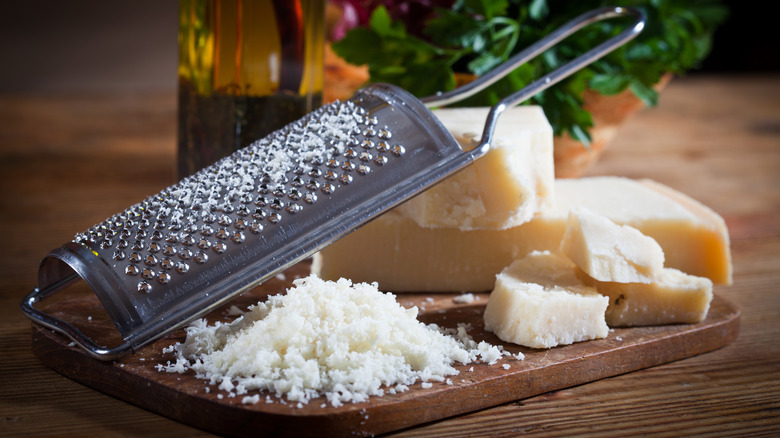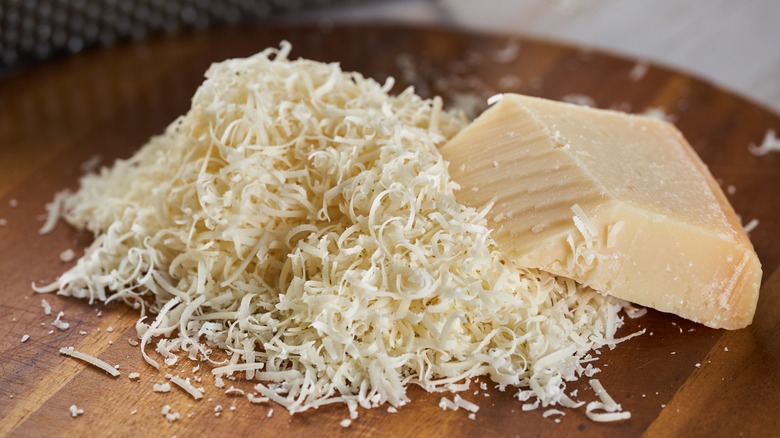The Reason You Should Avoid Buying Pre-Grated Parmesan Cheese
There's nothing quite like cooking the best spaghetti ever and topping it with a mountain of delicious Parmesan cheese. It's rich, savory, and a staple part of many folks' dinner rotation. However, it turns out that those shakers of pre-grated parm frequently found in the pasta aisle at supermarkets aren't something you should be pairing with any of your food.
In 2012, FDA investigated Pennsylvania cheesemaker Castle Cheese Inc. and found that it was using a mixture of other cheeses, namely white cheddar, mozzarella, and Swiss, in its brands of grated Parmesan. None of these other cheeses were listed on the packaging, nor was the company's use of cellulose, leading the FDA to file several violations against the company. While cellulose (often derived from wood pulp) is commonly added to shredded cheese as an anti-caking agent, it's not necessarily something everyone wants to eat. This leads us to the next, and possibly the most significant, problem with pre-grated Parmesan: additives.
Pre-grated Parmesan is rarely just pure cheese because an anti-caking agent is needed to keep it from clumping, while preservatives are added to keep it shelf-stable. Even the pre-grated parm in the refrigerated section may require these things. One way to avoid unnecessary additives and preservatives is to look for blocks or wedges of plain Parmesan cheese, or more specifically, Parmigiano Reggiano which is only produced in certain parts of Italy. Look for Parmesan with a DOP label, which means Protected Designation of Origin, that marks the cheese as authentic. Parmigiano Reggiano is strictly regulated in Italy, and cheeses marked like this are the real deal. Moreover, true parm should only contain raw cow's milk, cultures, rennet, salt, and nothing more.
How to grate your own Parmesan and freeze it
A block or wedge of Parmesan may cost you a bit more than the pre-grated varieties, but it's well worth it if you want to avoid additives. Moreover, you could even save the Parmesan rind for homemade broths after grating the cheese. Sure, it takes a bit of elbow grease, but you can grate extra and freeze the leftoversif you want to make sure you always have some on hand. To grate a ton of Parmesan without destroying your wrists with a hand grater, one option is to use a food processor with a grating disk which can easily make quick work of a large amount of parm. This will give it a finely grated consistency — perfect for topping pasta or filling ravioli.
In the fridge, freshly grated Parmesan will last for about two weeks before it starts to get clumpy, but when frozen, it can be stored for up to six months. Likewise, a block of parm can last for a year when frozen. When you want to use the frozen grated Parmesan, all you need to do is let it thaw for a few hours and it will be ready to use. Alternatively, if you're planning on melting the shredded parm, you can add it directly to a hot dish with no thawing necessary. Now, if you're worried about the shreds sticking together, you can add a bit of cornstarch to the grated cheese to prevent clumping. This doesn't affect the flavor at all, and you only need about a tablespoon to coat everything.

